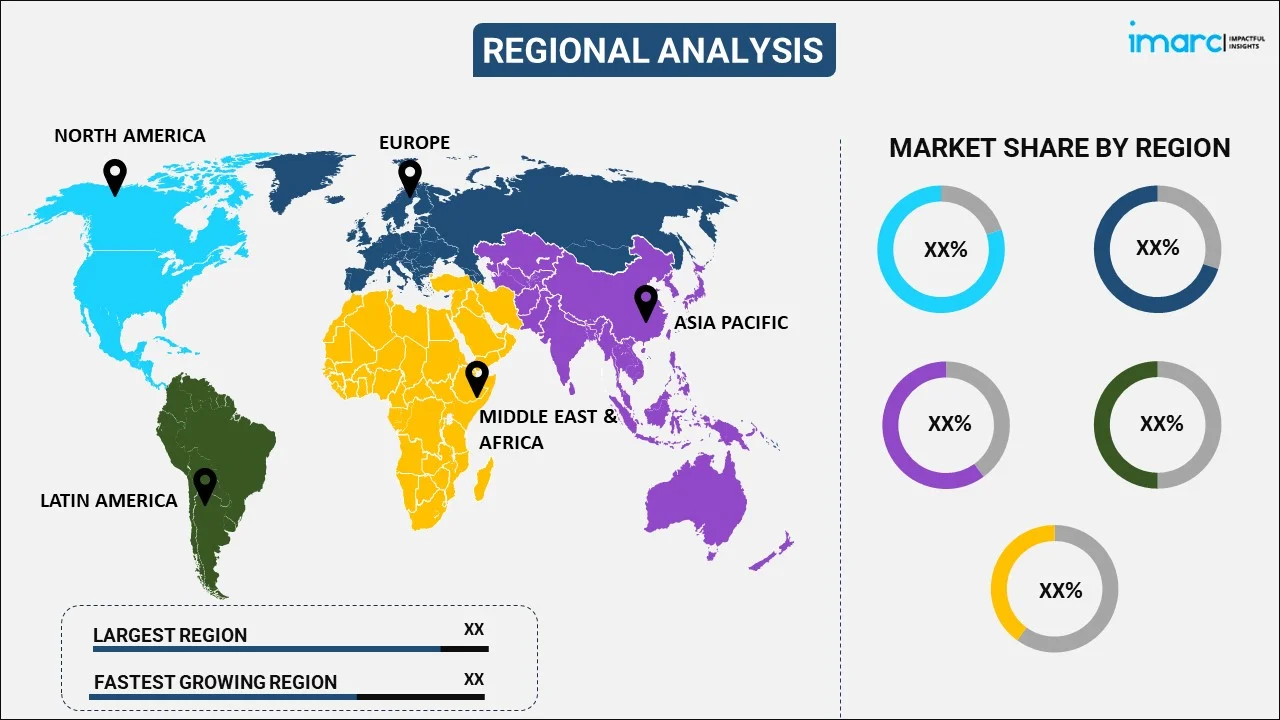
RNA Interference (RNAi) Drug Delivery Market Report by Application (Infectious Disease, Cardiology, Oncology, Neurology, Ophthalmology, Urology, Metabolic Disorders, and Others), Technology (Nanoparticle Drug Delivery, Pulmonary Drug Delivery, Nucleic Acid Drug Delivery, Aptamer Drug Delivery), and Region 2025-2033
Market Overview:
The global RNA interference (RNAi) drug delivery market size reached USD 99.8 Billion in 2024. Looking forward, IMARC Group expects the market to reach USD 466.1 Billion by 2033, exhibiting a growth rate (CAGR) of 17.75% during 2025-2033.
|
Report Attribute
|
Key Statistics
|
|---|---|
|
Base Year
|
2024
|
|
Forecast Years
|
2025-2033
|
|
Historical Years
|
2019-2024
|
|
Market Size in 2024
|
USD 99.8 Billion |
|
Market Forecast in 2033
|
USD 466.1 Billion |
| Market Growth Rate (2025-2033) | 17.75% |
Ribonucleic acid interference (RNAi) drug delivery refers to a therapeutic solution to monitor gene expression or mutations. RNAi drug delivery is usually administered through intravenous, intra-dermal and intraperitoneal injections and topical delivery methods. It involves nanoparticle, pulmonary, nucleic acid and aptamer drug delivery technologies. These technologies are also used for analyzing gene functions in eukaryotes and developing therapeutic gene silencing solutions. As a result, RNAi drug delivery is widely used for treating infectious diseases, chronic metabolic disorders, cardiovascular, neurological, urological, oncological and ophthalmological disorders.
The increasing prevalence of chronic medical and genetic disorders, such as cancer and cardiovascular diseases (CVDs) across the globe, represents one of the key factors driving the growth of the market. Furthermore, the rising geriatric population, which is more susceptible to such ailments, is also driving the market growth. In line with this, as the coronavirus disease (COVID-19) continues to spread across the globe, there has been a significant increase in the demand for RNAi drug delivery technologies. Targeted delivery methods, such as aptamer drug delivery systems, are gaining immense traction for the administration of antiviral drugs as they are induced by small interfering RNA (siRNA) that can inhibit the expression of viral antigens. Additionally, various technological advancements, such as the development of innovative synthetic delivery carriers and bio-vectors, are anticipated to drive the market growth. The nanocarriers, including siRNA or microRNAs (miRNA), are crucial for developing personalized medicines and identifying altered cellular molecules and metabolites. Other factors, including extensive research and development (R&D) activities in the fields of nanotechnology and molecular diagnostics, along with overall improvements in the healthcare infrastructure, are anticipated to drive the market further.
Key Market Segmentation:
IMARC Group provides an analysis of the key trends in each sub-segment of the global RNA interference (RNAi) drug delivery market report, along with forecasts at the global, regional and country level from 2025-2033. Our report has categorized the market based on application and technology.
Breakup by Application:
- Infectious Disease
- Cardiology
- Oncology
- Neurology
- Ophthalmology
- Urology
- Metabolic Disorders
- Others
Breakup by Technology:
- Nanoparticle Drug Delivery
- Pulmonary Drug Delivery
- Nucleic Acid Drug Delivery
- Aptamer Drug Delivery
Breakup by Region:

- North America
- United States
- Canada
- Asia Pacific
- China
- Japan
- India
- South Korea
- Australia
- Indonesia
- Others
- Europe
- Germany
- France
- United Kingdom
- Italy
- Spain
- Russia
- Others
- Latin America
- Brazil
- Mexico
- Others
- Middle East and Africa
Competitive Landscape:
The report has also analysed the competitive landscape of the market with some of the key players being Alnylam Pharmaceuticals Inc., Arrowhead Pharmaceuticals Inc., CureVac AG, Dicerna Pharmaceuticals Inc., Gradalis Inc., Ionis Pharmaceuticals Inc, Merck & Co. Inc., Moderna Inc., Quark Pharmaceuticals Inc. (SBI ALApharma Co. Limited), Silence Therapeutics Plc, and Sirnaomics Inc.
Report Coverage:
| Report Features | Details |
|---|---|
| Base Year of the Analysis | 2024 |
| Historical Period | 2019-2024 |
| Forecast Period | 2025-2033 |
| Units | Billion USD |
| Segment Coverage | Application, Technology, Region |
| Regions Covered | Asia Pacific, Europe, North America, Latin America, Middle East and Africa |
| Countries Covered | United States, Canada, Germany, France, United Kingdom, Italy, Spain, Russia, China, Japan, India, South Korea, Australia, Indonesia, Brazil, Mexico |
| Companies Covered | Alnylam Pharmaceuticals Inc., Arrowhead Pharmaceuticals Inc., CureVac AG, Dicerna Pharmaceuticals Inc., Gradalis Inc., Ionis Pharmaceuticals Inc, Merck & Co. Inc., Moderna Inc., Quark Pharmaceuticals Inc. (SBI ALApharma Co. Limited), Silence Therapeutics Plc, and Sirnaomics Inc |
| Customization Scope | 10% Free Customization |
| Post-Sale Analyst Support | 10-12 Weeks |
| Delivery Format | PDF and Excel through Email (We can also provide the editable version of the report in PPT/Word format on special request) |
Key Questions Answered in This Report:
- How has the global RNA interference (RNAi) drug delivery market performed so far and how will it perform in the coming years?
- What has been the impact of COVID-19 on the global RNA interference (RNAi) drug delivery market?
- What are the key regional markets?
- What is the breakup of the market based on the application?
- What is the breakup of the market based on the technology?
- What are the various stages in the value chain of the industry?
- What are the key driving factors and challenges in the industry?
- What is the structure of the global RNA interference (RNAi) drug delivery market and who are the key players?
- What is the degree of competition in the industry?
Need more help?
- Speak to our experienced analysts for insights on the current market scenarios.
- Include additional segments and countries to customize the report as per your requirement.
- Gain an unparalleled competitive advantage in your domain by understanding how to utilize the report and positively impacting your operations and revenue.
- For further assistance, please connect with our analysts.
 Inquire Before Buying
Inquire Before Buying
 Speak to an Analyst
Speak to an Analyst
 Request Brochure
Request Brochure
 Request Customization
Request Customization




.webp)




.webp)












